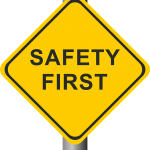 By Henry Brown
By Henry Brown
According to the Occupational Safety and Health Administration, there are about 12 job-related fatalities every day in the US. That’s more than one hundred deaths so far this year already in the workplace.
In many businesses, especially those based around sitting in front of a computer all day, the risks are minimal. But for some, especially in the oil and gas, mining and construction industries, the risks are real. These industries suffer the greatest number of fatalities on a per worker basis.
Now, though, entrepreneurs are looking for ways to improve what they call “safety culture” in small businesses using technology. Luke Anear, one of these entrepreneurs recently set up his own safety company designed to teach business owners about safety in the workplace. His goal is to help companies leverage technology to improve their safety audits.
Proactive vs. reactive approach to safety
Anear originally worked as a private investigator for an insurance company, ensuring that claimants’ claims about their injuries were true. After some time working in that role, he came to the realization that the whole system around safety in small business was broken. Small businesses were only reacting to safety issues after the fact: they weren’t doing anything proactive to prevent people from getting injured or killed.
This served as the motivation to find more proactive ways to prevent people from suffering injuries. He came to the realization that the good, old-fashioned checklist simply wasn’t good enough and began thinking about new ways to analyze company data. As a result, he created his own app to collect pertinent data related to safety.
Apps that provide more than mere checklists
Technology developed by Anear and others is having a tangible impact on the ground. Say, for instance, you operate a food stall in a busy market. New health and safety apps mean that a worker on the ground can snap a picture of some overripe fruit, upload that to the company cloud, and relay information about the state of their stock to others in the organization. It doesn’t seem like a game changer at first, but if the owners of the market stall realize they have been buying overripe produce that quickly becomes unsellable, they soon figure out that they need to have a conversation with their vendor about the type of produce they are buying.
Machine inspections
It’s not just apps that are driving a culture of safety, it’s also PUWER inspections. Businesses who use heavy machinery are often those most at risk of suffering a an employee injury or even a fatality. Anear has found that his apps have been able to make positive changes in workplaces faster, meaning that it has given companies the ability to react more quickly. If a machine is malfunctioning, they are able to get the relevant experts to inspect it far faster than they would have been able to otherwise.
Technology, therefore, is doing more than helping small businesses with mere compliance. Instead, it’s speeding up the process of maintaining safety, just as it’s speeding up a whole range of other routine tasks.
____
Henry Brown is an online marketing executive. When he isn’t talking shop he’s roaming the streets of London, uncovering the extra-ordinary in the ordinary.
